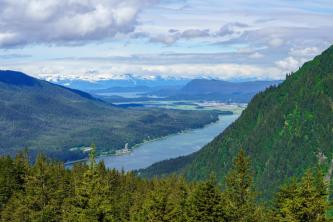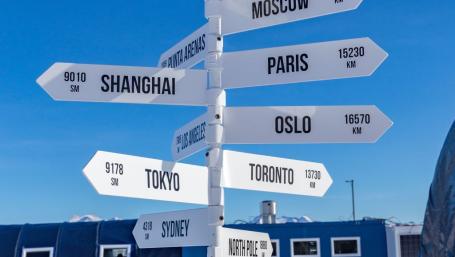
In Part 1, we discussed some resources to use to find information about new destinations.
If a destination has proven to be a challenge for other pilots, chances are one of those who beat the challenge has posted a report on social media.
Simply typing in the airport name and “pilot report” can yield a treasure trove of information and new contacts with recent information. For our Tel Aviv trip, for example, I learned about the need to call ahead to Nicosia Control 10 min. before entering its airspace. I also learned there are special customs and immigration rules at Ben Gurion unlike those at any other country, and those procedures are subject to change at any moment.
Having a social media contact who has been to your destination recently can save you time and money, as well as a little embarrassment from being caught unaware of the latest restriction.
The NBAA (www.nbaa.org) and Universal Weather & Aviation Inc. (www.universalweather.com) offer timely information submitted by recent visitors. Blogs can be illuminating as well as entertaining. Facebook offers many groups with many professional aviators willing to answer your latest questions.
For the sheer volume of participants, it is hard to beat the Facebook “Professional Jet Pilots” group with over 15,000 members. If you have a question about a particular destination, at least one of those members should be able to help you out. Once you are in the group, you can search for discussions by the airport name and then you can send a private message to the writer to get even more help.
It is hard to imagine a more out-of-the-way destination than Union Glacier (SCGC), Antarctica, just 7 deg. South of the geographic South Pole (coordinates: 79°46’40”S, 83°19’15”W) I challenge you to find any information about this airport at your usual aviation websites.
From the Facebook Professional Jet Pilots group we learn: The flight plan has to be filed locally; there are no ARINC latitude/longitude “short code” waypoints, so coordinates are needed; HF hardly works at all so a satphone or CPDLC are necessary; the airport doesn’t exist in most databases, so you might have to manually program pressurization systems and your enhanced ground proximity warning system; and you are unlikely to find instrument approach plates.
Can You Do a ‘Dry Run’ From Your Computer?

Juneau International Airport (PAJN), Alaska, at the end of the Gastineau Channel Credit: Christopher Michel
Some destinations must be seen to be believed. A friend was planning a trip from Ted Stevens Anchorage International Airport (PANC), Alaska, to Juneau International Airport (PAJN), Alaska, and wanted to see what an approach to Runway 8 would look like.
He used the “3-D view” available in any of ForeFlight’s Performance Plans from the Airports View menu. This opens an interactive window that allows you to pan and zoom the airport area to familiarize yourself with the surrounding terrain and obstacles.
Additionally, an instrument approach “3-D Procedure Preview” option is available when the instrument approach is selected from the Maps FPL window. A third feature, a 3-D Preview for the entire route of flight, is selectable from the Maps FPL window. This gives you a chance to view the flight beforehand, including the finer details of the instrument procedures.
Caption: A ForeFlight 3-D view of a flight from Anchorage to Juneau***
The approach into Juneau’s Runway 8 appears straightforward, but that isn’t the case with Runway 26, which requires aircraft to fly the narrow Gastineau Channel with mountains towering on either side. The only instrument approach from the south is the required navigation performance (RNP) procedures with authorization required (AR).
When I became RNP AR trained to qualify for the C384 authorization, the simulator didn’t have the Juneau approach available. But I still wanted to see the approach in all its 3-D glory to fully appreciate the challenge and thought Google Earth’s animation might help.
The easiest way to preview a flight is to take the FlightAware history of someone’s previous flight. You simply search the route by entering the origin and destination and select a flight that has already occurred. I was interested in the RNP AR approach into Juneau, so I looked for a flight from Seattle to Juneau and was presented with several Alaska Airlines flights. I picked one and then selected “View track log” and the Google Earth button, which sent a KML (Keyhole Markup Language) file to my computer.
I imported that into Google Earth Studio and got a 3-D view of that airliner’s flight. After viewing a few tutorials, I learned how to turn that into a video suitable for training my fellow pilots on what was in store for us. Learning to do this may take several hours, but once you’ve got the process down, it only takes a few minutes and will be an invaluable tool in your arsenal. Google Earth Studio is available free of charge at https://earth.google.com/studio, and the site includes many tutorials.
Caption: A Google Earth 3-D view of a flight through the Gastineau Channel to Juneau***
You Can’t Go Unless You’ve Been?
Back in the days when the U.S. Air Force had bases spread all over the world for its fighters and bombers, we in the Military Airlift Command were tasked with flying to far-flung airports that few of us had ever seen or heard of. The conventional scheduling process was “You can’t go unless you’ve been.”
In other words, somebody on the crew must have experienced the new destination’s challenges to train the next crop of crewmembers. Of course, we had to make exceptions; the mission did not stop for lack of prior experience.
So too it is with us in business aviation. We are often the first who we know to go. The advantage we have today, however, is that we have the resources to hear from those who have gone before us. Our challenge is to know where to look and then, simply, ask.









